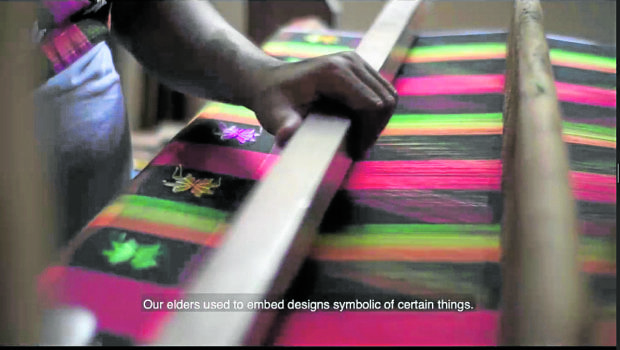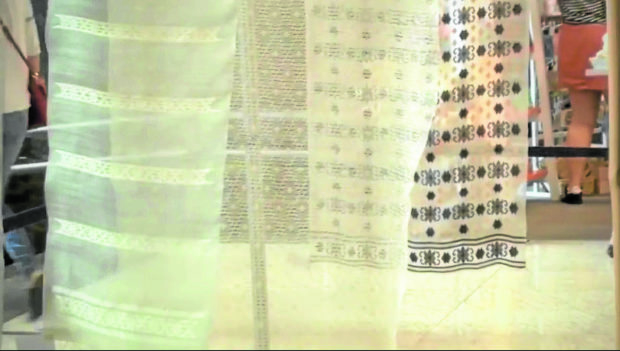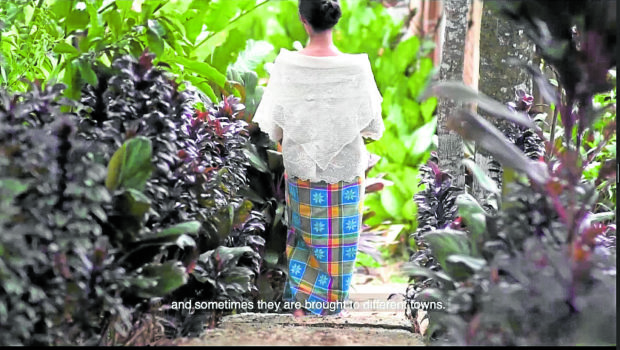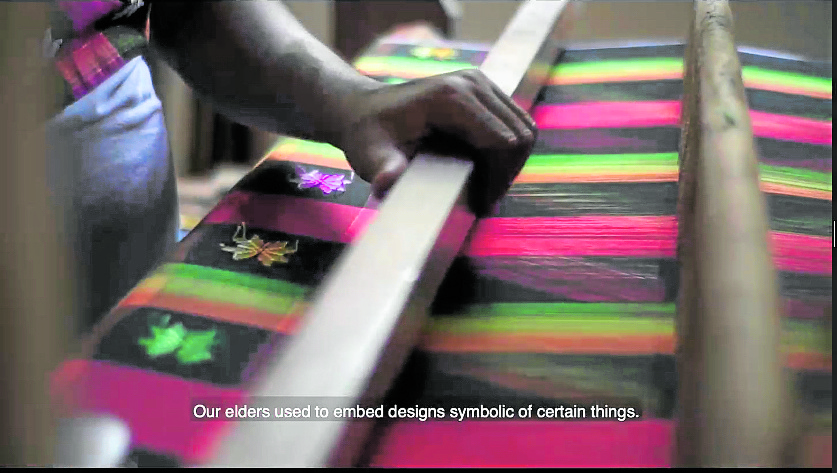
“Your body should be in synchrony with your mind,” says award-winning Aklan-based piña weaver Raquel Eliserio of the weaving process, as she sits at her loom. Eliserio is among the Panay weavers featured in the beautiful 30-minute documentary film “Threaded Traditions: Textiles of Panay Island.”
The film, directed and written by Louise Isabel “Luna” Mendoza, a young film graduate of the University of the Philippines Film Institute, had a special online screening last Sept. 10, and was produced by the Museum Foundation of the Philippines and Habi The Philippine Textile Council for the Kaagi Philippine Studies Conference of the School of Oriental and African Studies (SOAS) at the University of London. Executive producers are Carlo Eliserio, an Aklanon textile artist finding new ways to work with natural fibers, and RD Auto, a Panay-based videographer.
“The communities we chose are really the most representative of the various textile traditions of Panay: piña, hablon for the patadyong, and the embroidery of the Panay Bukidnon called panubok,” says Habi president Adelaida Lim.
Thus, beautiful visuals of the area, as well as the exquisite fabrics, are shown, with the weavers themselves talking about how the design and creation of such traditional fabrics reflect their own lives, environment, community and beliefs. All this is set to haunting music.

During the brief question-and-answer period after the screening, Mendoza revealed how she chose to do away with a narrator, so the artisans could tell their own stories.
It was tough enough not being able to shoot in the ancestral domain of the Panay Bukidnon, forcing the creative team to use existing footage. The production took three months, including shooting in the midst of a pandemic.
“The crew of three—a director-writer, an executive producer and a videographer-editor—was assembled by the end of April, and we had a series of Zoom meetings to determine the story, and how it would be shot given quarantine restrictions,” says Lim.
“Fortunately, our multitasking executive producer and videographer were both from Aklan, but our director was not able to travel to Panay for the shoot. We only gave ourselves 10 shooting days, which were interspersed throughout the month of May. Editing started the first week of June, and the film was downloaded to SOAS for its premiere on June 20.”
Spotlighting talent
There will be another showing on Oct. 22, which will also mark the deadline for submission of entries to the 4th Lourdes Montinola Piña Weaving Competition, which Habi established to spotlight the talent of traditional piña weavers. The call for entries has been posted on Habi’s website and social media platforms. (@habicouncil on Instagram, habitextilecouncil.ph)Two new awards will also be given: one to an outstanding young weaver under 30 years old, and another for innovation.
The entries will be posted online and exhibited at the Silverlens Galleries for viewing, and before the selection of award winners.

The good news is that schools and groups may request to view “Threaded Traditions” for free; just send an email to [email protected]. Habi also hopes to produce more such educational films in the future.
Habi was established in 2009, with a mission to preserve, promote, and enhance Philippine textiles through “education, communication and research using public and private sources.”
Maria Isabel Ongpin is chairperson and founder of the group, which held the annual Likhang Habi Market Fair every year until the pandemic. The group is delighted to witness a resurgence of interest in Philippine weaves and textiles, and continues to champion the rights of artisans, while also cautioning about cultural sensitivity in their promotion, as well as against the unauthorized and damaging mass production of fake material.
“The positive response we have received for the documentary is very encouraging,” says Lim. “We have always wanted to document weaving traditions in order to have data about the handloom weaving industry, the designs, cultural meanings, methods and techniques. We thought it would be good to present the weaving of our different cultural communities in a way that would appeal to young students. We hope, wish and dream that more young people will take up the craft of creating traditional textiles and innovating on them, because traditional textiles define our identity.
“Also, the future is handmade. Artisanal weaving in the country can contribute to the economy in a big way, if promoted properly and patronized by Filipinos, first of all.”









































